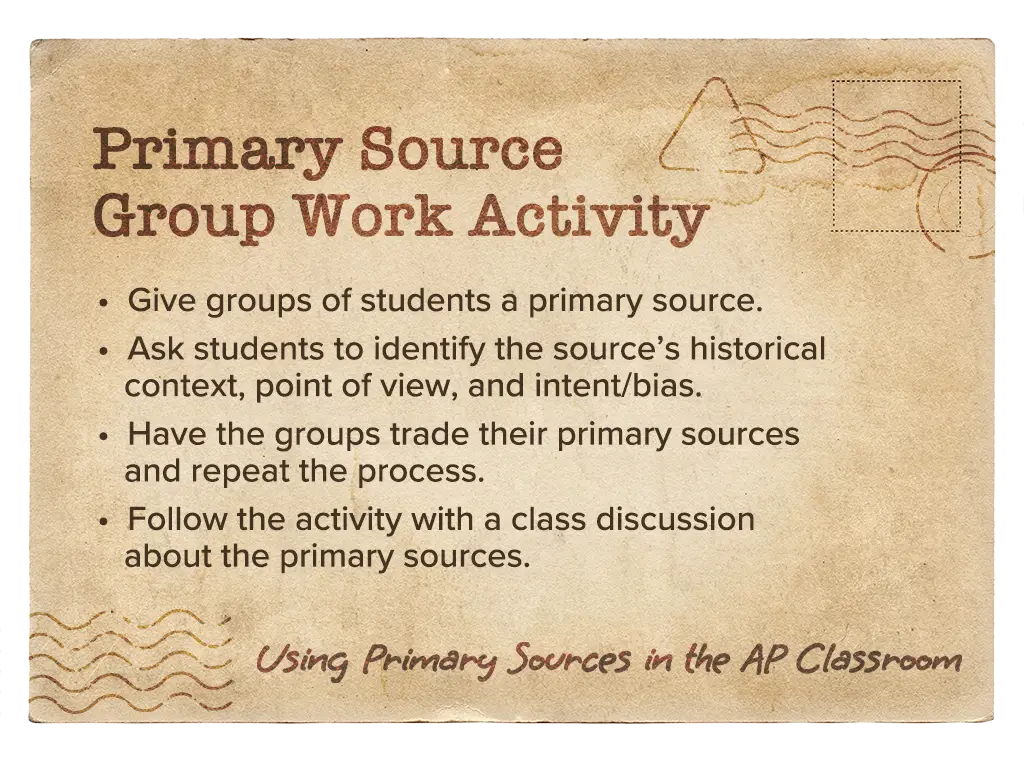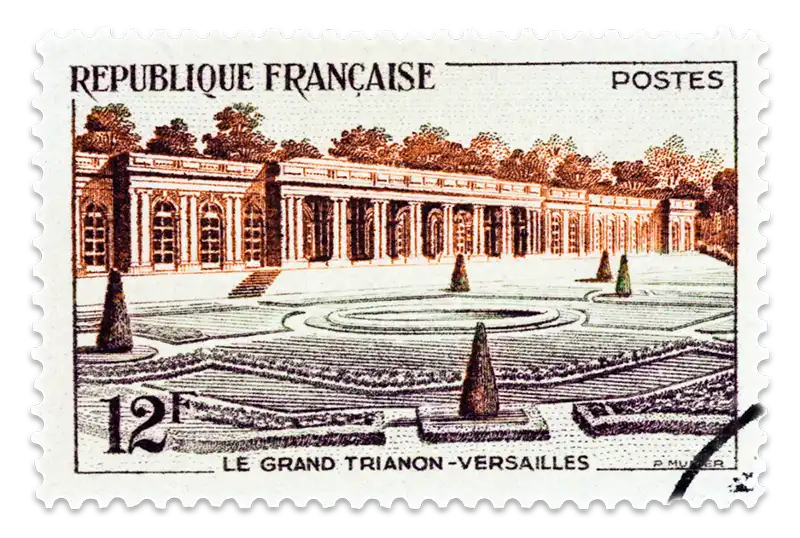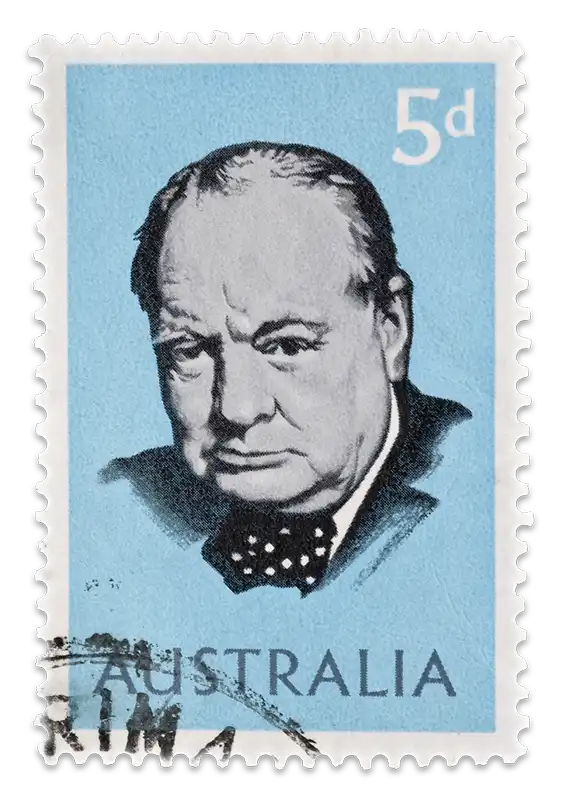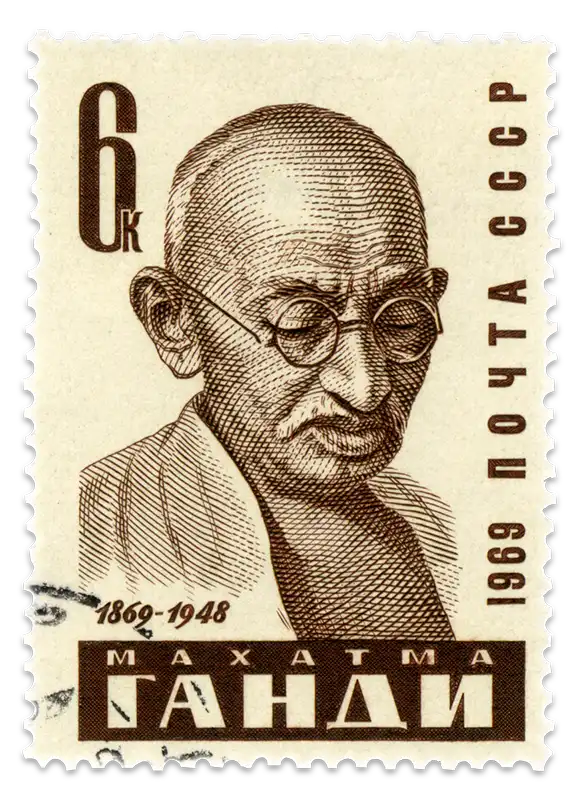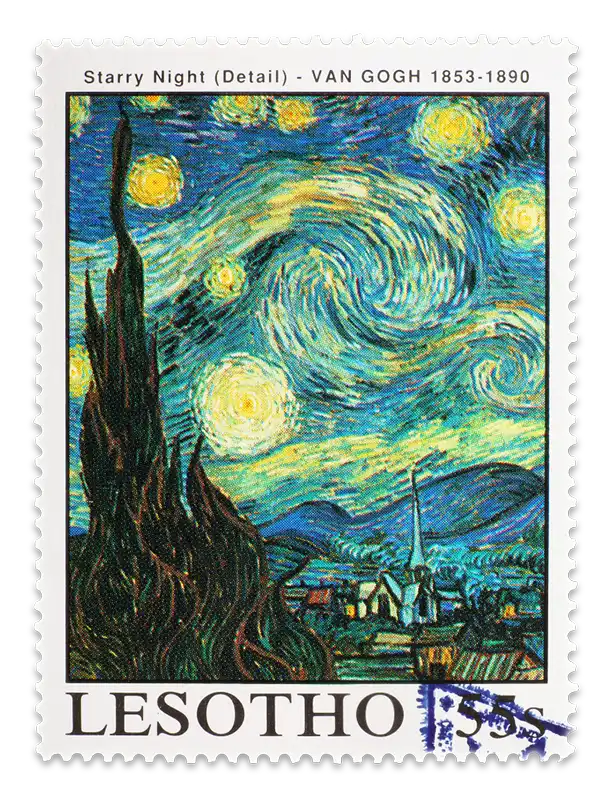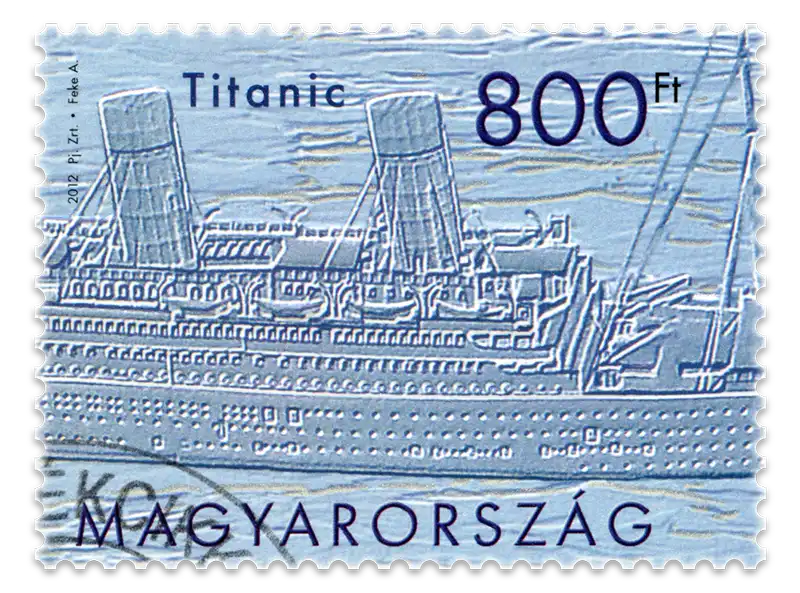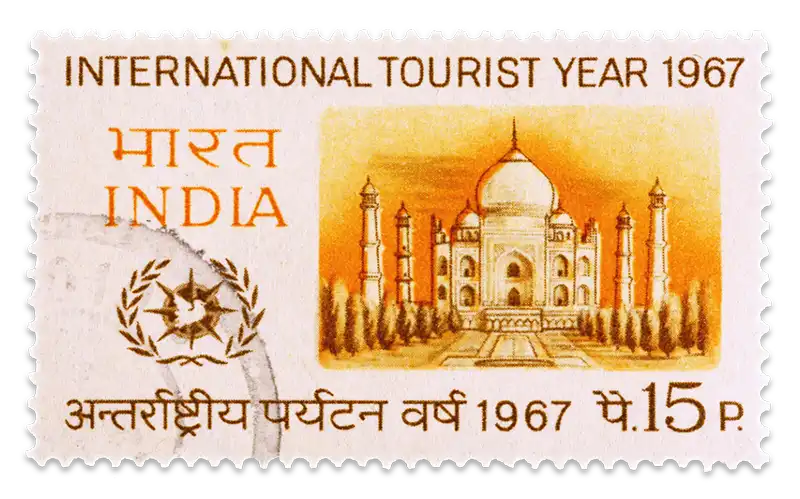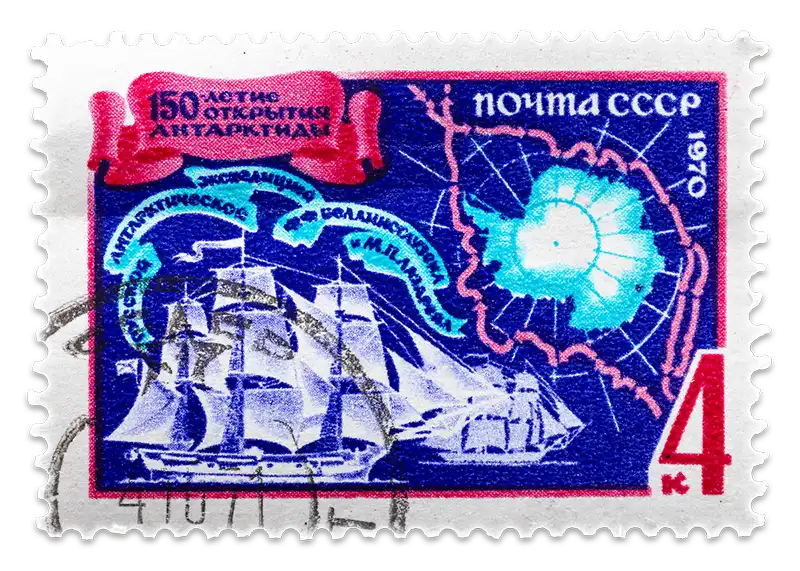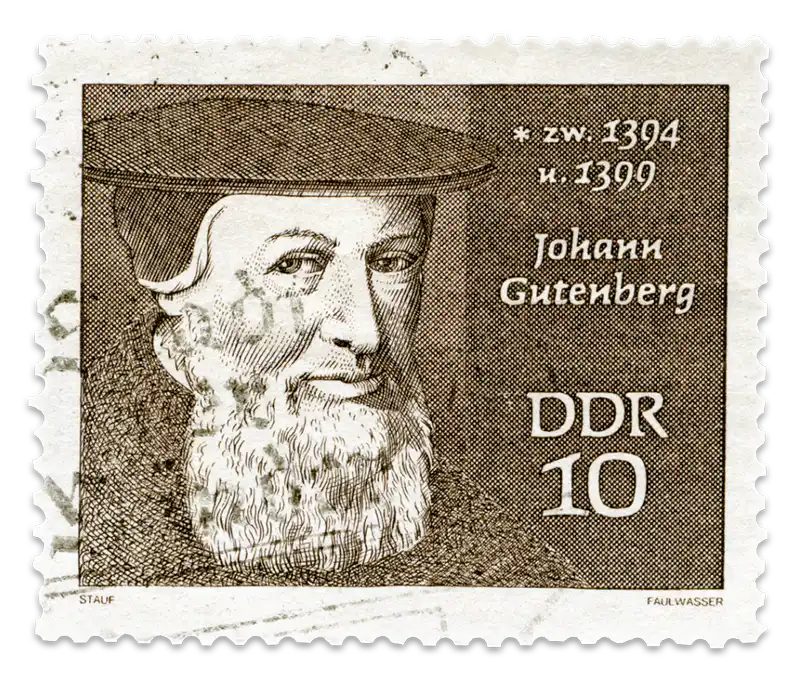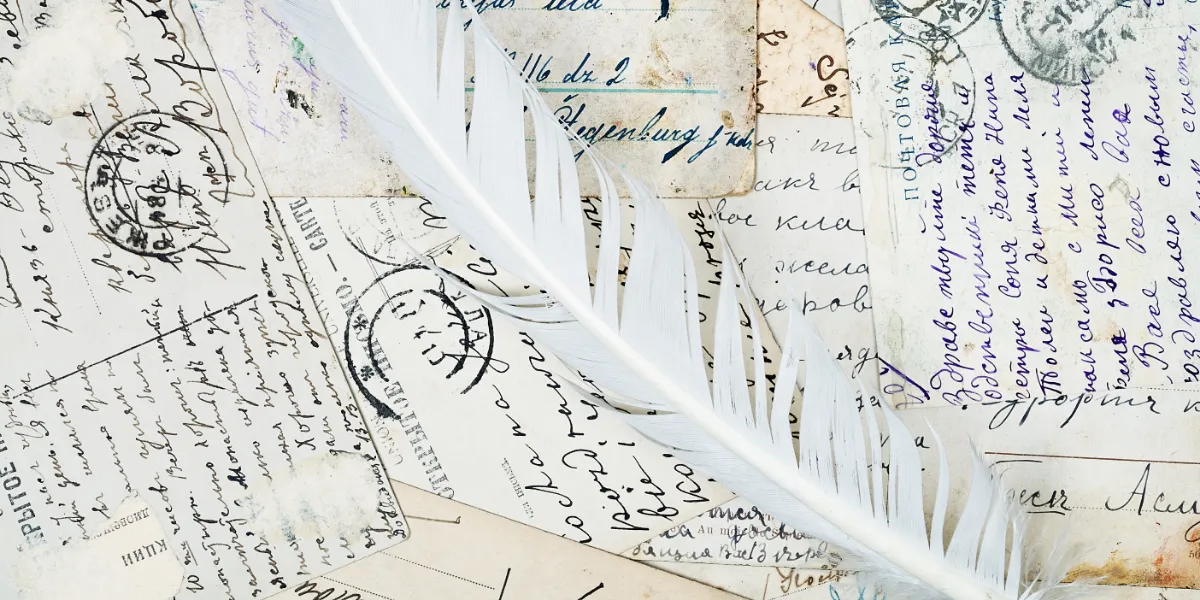AP® World History Primary Sources
There is a commonly-held belief that, prior to Christopher Columbus’ voyage to the Americas, everyone thought the earth was flat. Along with many other myths surrounding Columbus, this belief simply isn’t true. On the contrary, the majority of people throughout the medieval era believed that the earth was round, and the idea of it had already been around for nearly 2,000 years prior to Columbus’ journey. How do we know this? In addition to a number of “round earth” references during the medieval era, a number of sources directly recorded by ancient Greek philosophers–such as Plato and Aristotle–also clearly refer to a spherical earth.1
In today's world of social media and questionable online sources, it is easy to find inaccurate and/or biased information about historical figures and events. Over time, when people interpret historical events or periods through the lens of their own prejudices and worldviews, they can distort their initial understanding of those events or periods. This can lead to sharing distorted information with future generations through secondary sources, and it makes it difficult for students to accurately understand the context surrounding a historical event.
When learning about the past in an AP® World History class, studying primary sources helps minimize bias. Although AP World History primary sources are not completely without biases of their own, they are limited. This is because these sources offer firsthand accounts of historical events and time periods from the viewpoint of those who were actually present at the time. To improve their students’ understanding of course concepts, teachers should regularly incorporate AP World History primary sources into their lessons.
Incorporating World History Primary Sources into Your WHAP Class
Using primary sources, including letters, diaries, photographs, speeches, and government documents, can provide a more in-depth picture of historical events and help AP World History students gain a deeper understanding of the past. WHAP teachers can use these primary sources in a variety of ways, such as with group projects, research, and class discussions.
Teachers can assign groups or partners documents that they can then analyze and discuss in terms of language, historical context, and biases. Bell ringers and exit tickets that require the use of AP World History primary source documents related to the day’s learning objective can also engage students and get them thinking about the topic before the lesson begins.
Analyzing AP World History primary sources regularly can help students develop essential critical thinking skills, enabling them to think outside the box and apply their knowledge toward drawing conclusions about the past.

WHAP Government Documents
There’s no doubt about it—significant historical documents are an important tool for comprehending the evolution of human civilization. These documents offer insight into the political, social, and economic forces that have influenced societies across the world, helping historical scholars better understand how humanity has developed into what it is today.
The Treaty of Versailles, Magna Carta, and the Universal Declaration of Human Rights are among the most important primary sources in human history that allow for a contextual understanding of historical events. These AP World History documents not only provide insights into their respective eras but also enable students to develop a stronger context for current events and ongoing social and political discussions.
The Declaration of Independence (1776)
The Declaration of Independence is a historic document that declared the United States to be a new and independent nation, separate from British rule. It laid out the foundational principles of democracy, equality, and natural rights that have since ruled American politics and society.
The French Declaration of the Rights of Man and Citizen (1789)
On August 26, 1789, the French National Assembly adopted a document known as the French Declaration of the Rights of Man and Citizen. It outlined the fundamental rights of French citizens and served as a model for subsequent democracies around the world.
The Communist Manifesto (1848)
The Communist Manifesto is a political pamphlet written by Karl Marx and Friedrich Engels, published in 1848. It is a highly influential work of Marxist theory, outlining the principles of communism and calling for the overthrow of the capitalist system.
The Meiji Constitution (1889)
The Meiji Constitution was a document created in 1889 that established the political system of Japan during the Meiji period, granting significant power to the emperor and establishing a bicameral parliament. It represented a major shift in Japanese politics and modernization efforts.
The Balfour Declaration (1917)
The Balfour Declaration was a letter that British Foreign Secretary Arthur James Balfour sent to Baron Rothschild, a prominent member of the British Jewish community, in 1917. It offered the British government's support for the establishment of a "national home for the Jewish people" in Palestine. This letter led to the eventual establishment of the state of Israel in 1948.
The Treaty of Versailles (1919)
The Treaty of Versailles was a peace agreement signed on June 28, 1919, between Germany and the Allied powers. It officially ended World War I and imposed significant penalties and restrictions on Germany, including the payment of reparations and the disarmament of its military.
The Instrument of Surrender (1945)
The Instrument of Surrender was the document that marked Japan's official surrender and ended World War II. It was signed on September 2, 1945, aboard the USS Missouri in Tokyo Bay by representatives of Japan and the Allied Powers.
The Universal Declaration of Human Rights (1948)
In 1948, the United Nations General Assembly adopted the Universal Declaration of Human Rights, a significant document in the history of human rights. The document sets out fundamental human rights that are universally protected and serve as a common standard for all people and all nations.
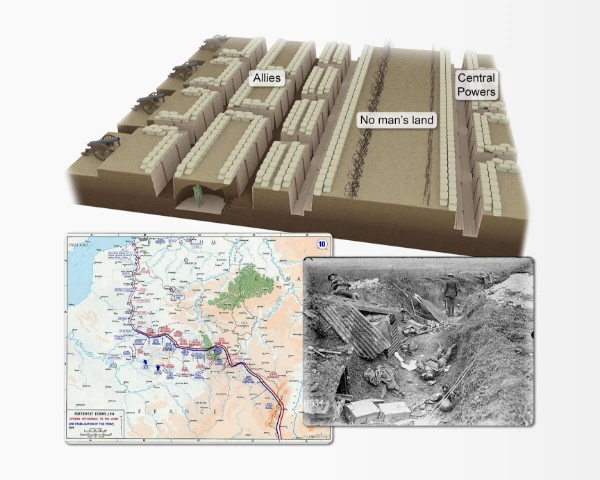
AP World History Speeches
Throughout history, speeches have had a significant impact on the political and cultural landscape of the world, as they have been used to express important ideas, lead people, and inspire change. From Sojourner Truth's “Ain't I a Woman?” to Winston Churchill's "Blood, Toil, Tears, and Sweat," these iconic speeches have become an integral part of human history and have played a pivotal role in shaping the course of the world.2
Speeches are remarkable not only for their historical significance but also because they demonstrate how language can influence public opinion and promote social and political reform.
“Freedom or Death” by Emmeline Pankhurst (1913)
Emmeline Pankhurst called for militant action in the fight for equality in her 1913 speech "Freedom or Death," which supported women's suffrage. She implored women to take direct action and fight for their rights, even at the risk of imprisonment or death.
“Blood, Toil, Tears, and Sweat” by Winston Churchill (1940)
In his "Blood, Toil, Tears, and Sweat" speech, delivered on May 13, 1940, Winston Churchill rallied the British people with his famous statement, "I have nothing to offer but blood, toil, tears, and sweat." Churchill vowed to fight Nazi aggression with every ounce of his being. The speech marked a turning point in World War II and is remembered as one of Churchill's most inspiring speeches.
“We Shall Fight on the Beaches” by Winston Churchill (1940)
On June 4, 1940, during World War II, Winston Churchill delivered his “We Shall Fight on the Beaches” speech to the British House of Commons. In the speech, Churchill acknowledged the grave situation faced by Britain and its allies, and declared his unwavering resolve to fight against Nazi Germany, famously stating, "We shall fight on the beaches, we shall fight on the landing grounds, we shall fight in the fields and in the streets, we shall fight in the hills; we shall never surrender."
“Quit India” by Mahatma Gandhi (1942)
The "Quit India" speeches were a series of three addresses delivered by Mahatma Gandhi on August 8, 1942, calling for the British to leave India. Gandhi also called for Indian people to engage in nonviolent resistance and civil disobedience to achieve independence from Great Britain.
“I Am the First Accused (I Am Prepared to Die)" by Nelson Mandela (1964)
"I Am the First Accused" is a speech by Nelson Mandela given during the Rivonia Trial in 1964. The speech is a powerful defense of his actions against the South African apartheid government and an assertion of the ANC's commitment to the freedom and equality of all South Africans.

WHAP Historic Personal Accounts, Letters, and Narratives
“The Analects” by Confucius (5th Century BCE)
The Analects of Confucius is a collection of the Chinese philosopher’s teachings and thoughts.3 Confucius’ book is considered the central text of Confucianism and emphasizes the importance of moral values, family, education, and government.
“The Prince” by Niccolò Machiavelli (1532)
"The Prince" by Niccolo Machiavelli is a treatise on political theory and how rulers can gain (and maintain) power, often in ways some would consider unethical or immoral.4 It is considered one of the most important works on political philosophy.
"The Letters of Vincent van Gogh" by Vincent Van Gogh (1872-1890)
The “Letters of Vincent Van Gogh” is a collection of personal letters written by the famous artist to his brother, Theo van Gogh, as well as to other friends and family members. Vincent Van Gogh’s letters provide insight into his artistic process, his mental health struggles, and his personal relationships.
"The Diary of Anne Frank" by Anne Frank (1942-1944)
"The Diary of Anne Frank" is a collection of writings by Anne Frank, a young Jewish girl who documented her experiences while in hiding with her family during the Nazi occupation of the Netherlands in World War II. The diary has become widely read and is considered a powerful account of the human experience during the Holocaust.
“A Long Way Gone: Memoirs of a Boy Soldier” by Ishmael Beah (2007)
"A Long Way Gone" is a memoir by Ishmael Beah about his experiences as a child soldier during the civil war in Sierra Leone. The book recounts his journey from being a victim of war to a child soldier, and eventually to his rehabilitation and recovery.
“I Am Malala: The Girl Who Stood Up for Education and was Shot by the Taliban” by Malala Yousafzai (2013)
The memoir "I Am Malala" is written by Malala Yousafzai, a young activist from Pakistan who was shot by the Taliban for advocating for girls' education. It describes her experiences before and after the attack, as well as her advocacy work for girls' education around the world.5

AP World History Artistic or Creative Works
Artistic and architectural historic works are priceless cultural relics that provide a window into the social, political, and economic contexts of their time. They offer unique perspectives on history and represent the values, beliefs, and feelings of their creators. Worldwide, historical works of art, photographs, and architecture have had a significant impact on the development of cultural heritage and identity.
Paintings and Sculptures
- "The Birth of Venus" by Sandro Botticelli (1485)
- “The Last Supper” by Leonardo da Vinci (1498)
- "The Mona Lisa" by Leonardo da Vinci (1517)
- “The Night Watch” by Rembrandt van Rijn (1642)
- “Girl with a Pearl Earring” by Johannes Vermeer (1665)
- "Starry Night" by Vincent van Gogh (1889)
- “The Scream” by Edvard Munch (1893)
- "Water Lilies" by Claude Monet (1926)
- “The Persistence of Memory” by Salvador Dali (1931)
- "The Weeping Woman" by Pablo Picasso (1937)
- “Number 1, 1950 (Lavender Mist)” by Jackson Pollock (1950)
- “The Campbell’s Soup Cans” series by Andy Warhol (1962)
Sculptures and Statues
- “The Moai statues of Easter Island” (1400-1650)
- “Pieta” by Michelangelo
- "David" by Michelangelo (1504)
- "The Thinker" by Auguste Rodin (1882)
- “The Kiss” by Auguste Rodin (1882)
- “The Statue of Liberty” by Frederic August Bartholdi (1886)
- “The Little Mermaid” Statue in Copenhagen, Denmark (1913)
- “Christ the Redeemer” in Rio de Janeiro, Brazil (1931)
- “Mount Rushmore” by Gutzon and Lincoln Borglum (1941)
Photography
- “View from the Window at Le Gras” by Joseph Nicephore Niepce (1826)
- “The Horse in Motion” by Eadweard Muybridge (1878)
- “Nikola Tesla in His Laboratory” by The Century Magazine (1899)
- “A Cotton Mill Spnner” by Lewis Hine (1908)
- “Last Known Picture of the Titanic Afloat” by Francis Browne (1912)
- "Lunch atop a Skyscraper" (1932)
- “Man Jumping the Puddle” by Henri Cartier Bresson (1932)
- "The Hindenburg Disaster" by Sam Shere (1937)
- "Nagasaki Mushroom Cloud" by Lieutenant Charles Levy (1945)
- “V-J Day in Times Square” by Alfred Eisenstaedt (1945)
- “Gandhi and the Spinning Wheel” by Margaret Bourke White (1946)
- “The First Photo of Earth from Space” by White Sands Missile Range/Applied Physics Laboratory (1946)
- “Dali Atomicus” by Philippe Halsman (1948)
- “Einstein Sticking His Tongue Out” by Arthur Sasse (1951)
- “Flying Skirt” by Sam Shaw (1954)
- “Che Guevara, Guerillero Heroico” by Alberto Korda (1960)
- “US Marshals with Young Ruby Bridges on School Steps” Uncredited DOJ photographer (1960)
- “Fatal Bullet Hits Oswald” by Robert H. Jackson (1963)
- “1968 Olympics Black Power Salute” by John Dominis (1968)
- "Earthrise" by William Anders (1968)
- “Apollo 11 Astronaut Aldrin Saluting the Flag At Tranquility Base” by NASA (1969)
- “Blue Marble” by NASA’s Apollo 17 crew (1972)
- "Afghan Girl" by Steve McCurry (1984)
- “Challenger Explosion” by John A. Chakeres (1986)
- "Tank Man" by Jeff Widener (1989)
- “The Vulture and the Little Girl” by Kevin Carter (1993)
- “Raising the Flag at Ground Zero” by Thomas E. Franklin (2001)
- “The Pillars of Creation” by NASA’s Hubble Space Telescope (2015)
- “First Photo of a Black Hole” by the Event Horizon Telescope (2019)
Historical Structures and Architecture
- The Forbidden City in Beijing (1420)
- Machu Picchu in Peru (1450)
- Sistine Chapel in Vatican City (1481)
- The Kremlin in Moscow (1495)
- Globe Theatre in London (1598)
- The St. Peter's Basilica in Rome (1626)
- The Taj Mahal in India (1653)
- The Palace of Versailles in France (1710)
- Louvre Museum in Paris (1793)
- Big Ben (a.k.a. The Great Bell of the Great Clock of Westminster) (1843)
- Neuschwanstein Castle in Germany (1869)
- The Eiffel Tower in Paris (1889)
- Casa Mila in Barcelona (1912)
- The Empire State Building (1931)
- Sydney Opera House in Sydney (1959)
Web Site Resources for AP World History Primary Sources
WHAP teachers can have an abundance of AP World History primary source documents at their fingertips if they just know where to look for them. There are several online resource sites that can help teachers find the primary sources they need, too. Some popular resource web sites include the Internet History Sourcebooks Project, Project Gutenberg, and the CORSAIR Online Collection Catalog.
Fordham University: Internet History Sourcebooks Project
The Internet History Sourcebooks Project curates a large collection of primary sources from several historical periods and regions, providing a way for students to engage with a variety AP World History documents and historical perspectives.

DukeUniversity World History: Online Primary Sources
Duke University provides primary sources through its World History: Online Primary Sources page. Here, teachers can access an extensive collection of AP World History primary source documents that they can utilize in their lessons.
University of Michigan Library
The University of Michigan Library is an excellent resource for a diverse collection of AP World History documents, such as manuscripts, maps, photographs, and archival materials.
Christopher Newport University Library
The Christopher Newport University Library provides teachers with access to a wide range of historical documents, photographs, and maps, through its collections and online resources.
The Medieval Academy of America: Medieval Digital Resources
The Medieval Academy of America serves as a valuable platform for AP World History teachers who need to access primary sources related to the medieval period, including manuscripts, artwork, historical texts, and archaeological findings.
Project Gutenberg
Project Gutenberg offers a vast collection of digitized books, including historical texts from various time periods and regions.
CORSAIR Online Collection Catalog
The CORSAIR Online Collection Catalog, put together by the Morgan Library & Museum, provides access to a wide range of primary source materials such as manuscripts, rare books, and artworks.
Roy Rosenweig Center for History and New Media
The Roy Rosenzweig Center for History and New Media offers a range of digital resources and projects, including primary source collections, interactive exhibits, and educational tools.
West Sound Academy Library
The West Sound Academy Library provides access to various primary source databases, archives, and research materials.
Digital Bodleian
The Digital Bodleian offers a diverse collection of digitized primary sources, including manuscripts, maps, photographs, and other historical documents.
Hanover College History Department
The Hanover Historical Texts Collection from the Hanover College History Department is a valuable resource that offers a wide range of primary source texts, images, and maps.
Yale Law School: The Avalon Project
The Avalon Project from Yale Law School is a comprehensive digital collection of primary source documents in law, history, and diplomacy, such as historical treaties, constitutional documents, and diplomatic correspondence.
Jeremy Norman’s History of Information
Jeremy Norman's History of Information is a valuable resource with primary sources related to the development of human communication, including manuscripts, early printed books, maps, and scientific texts.
Vatican Apostolic Library
The Vatican Apostolic Library and its digital archives offer a rich collection of ancient manuscripts, historical documents, and artifacts.
Harvard Library: Library Research Guide for Finding Manuscripts and Archival Collections (Vatican)
The Harvard Library's Library Research Guide for Finding Manuscripts and Archival Collections (Vatican) serves as a comprehensive resource for AP World History teachers to navigate and access the primary sources kept in the Vatican's extensive manuscripts and archival collections.
Europeana Collections
Europeana is a digital platform with primary sources from various European cultural institutions, providing AP World History teachers with a diverse collection of historical documents, images, and artifacts for educational purposes.
Internet Archive (Archive.org)
Internet Archive (Archive.org) is a digital library that hosts a vast collection of primary source books, articles, images, videos, and audio recordings.
- The World’s Best Orations (10 volumes)
- The World’s Best Essays from the Earliest Period to the Present Time
Primary Resources and Document-Based Questions (DBQs)
In preparation for document-based questions (DBQs) on the exam, AP World History teachers frequently use primary sources to help their students. These historical documents provide students with the opportunity to analyze and interpret past events, perspectives, and motivations, as well as develop the critical thinking skills required for DBQs. Teachers can integrate primary sources into class discussions, assign homework involving their analysis, and use them to develop DBQ questions in class or on practice exams.
When using primary sources to prepare for DBQs, teachers can provide guiding questions that help students analyze the sources and identify key themes and arguments. Furthermore, teachers can demonstrate how to analyze primary sources by emphasizing critical details and explaining how these details relate to larger historical contexts and themes.
WHAP teachers can also help their students get ready for document-based questions by using UWorld's Learning Tools for AP Courses. The platform provides students with numerous primary sources and practice questions designed specifically to help them prepare for the DBQs they’ll see on the exam.
Key Takeaways
Working with and analyzing primary sources is an integral part of AP World History. These sources offer students a distinctive opportunity to delve into historical events through firsthand accounts and artifacts. Historical documents, art, photos, and architecture are among the many primary sources that educators can use to create fascinating and informative lesson plans.
Find out how UWorld's Learning Tools for AP Courses help teachers prepare their students for the primary sources they’ll see on the WHAP exam with quality practice questions and answer explanations.
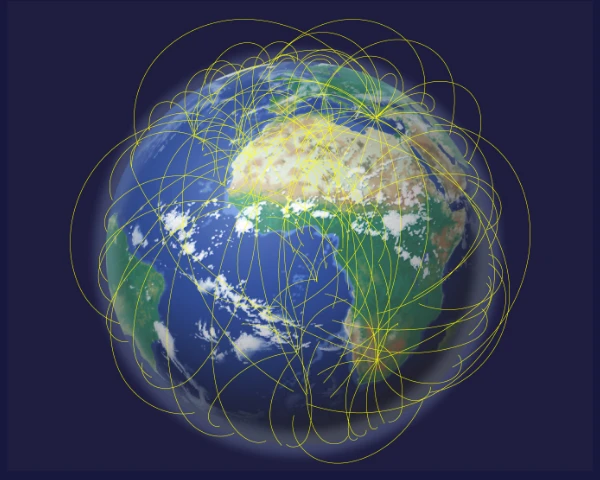
References
- “The Earth is, in fact, round.” Medieval manuscripts blog. (n.d.).
https://blogs.bl.uk/digitisedmanuscripts/2018/05/the-earth-is-in-fact-round.html - Damilola, L. (2022, July 15). 10 famous speeches that shaped history. explorethearchive.com. Retrieved May 4, 2023, from
https://explorethearchive.com/famous-speeches - The analects of confucius. Columbia University Press. (2017, February 22).
http://cup.columbia.edu/book/the-analects-of-confucius/9780231141642 - Encyclopædia Britannica, inc. (n.d.). The Prince of Niccolò Machiavelli. Encyclopædia Britannica.
https://www.britannica.com/biography/Niccolo-Machiavelli/The-Prince
